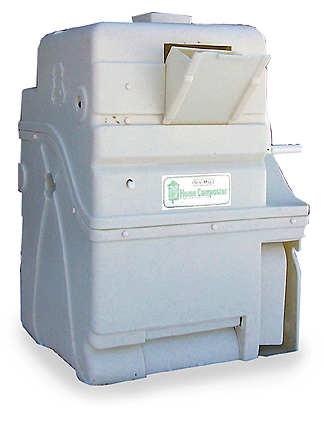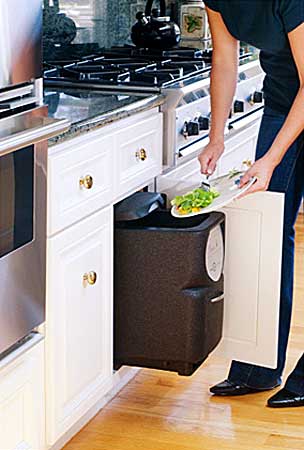When people say green kitchen design they usually mean recycled glass counters or something. But the actual design of the kitchen doesn’t change much. For me a green kitchen design alters the behavior of the inhabitants so that they better the environment without extra thought or effort.
For example we all know recycling and composting are good for the planet. But most kitchens are not designed to accommodate these actions. Notice I say “actions”. As in behavior.
It does not matter how determined a person is, if the system is not designed correctly then their determination will eventually fail them. When it is an individual against the system, the system almost always wins.
People like Martin Luther King and Gandhi are proof that individuals can change the system but they are the exception to the millions who didn’t succeed.
So if you want to change the world, redesign the system around you so that your actions are effortless. The concept of people sacrificing for the world clearly isn’t working. Ecological revival will come when we design things so that living ecologically entails the least amount of sacrifice.
If it is easy, people will come.
And of course it is easiest to start small. In the kitchen for example.
In the kitchen this means incorporating green activities into the design so that inhabitants don’t need to give a rats ass about saving the world. All they have to do is follow that path of least resistance and they will end up benefiting the world anyway.
This definitely means incorporating space for recycling. Recycling is usually a bunch of ugly plastic buckets clogging up the hallway. Unless you are a hippie with ideals stronger than your body odor, eventually the plastic buckets go in favor of a more harmonious space.
So every green kitchen has to have built into its FSC wood cabinets space for recycling – In New York this is one container for paper and one for plastic/metal. The space needs to be right beside the garbage so that it is effortless and easy.
The other thing any green kitchen needs is a space for composting. Usually composting is a fruit fly ridden smelly bucket next to the cruddy cat food bowl. Again, unless you have internalized your forefathers’ guilt ridden puritan values and think only suffering accomplishes progress, most people will not tolerate this kind of composting.
So right next to the garbage and recycling needs to be a designated space for composting. It needs to be designed into the cabinets. In fact it needs to be designed so that it can’t be used for much else. That way the easiest path is for people to use it for composting.
While you are at it you design a space close to the kitchen outside that is aesthetically pleasing for the composting bucket to go. It needs to be designed in such a way that it does not get too much or too little sun, so that the breeze does not carry its musty smell back into the house, so that it is not an eyesore etc. Again, it has to be acceptable to most people.
If you really want to impose your design onto the inhabitants then you use an internal composter like this one:

Looks pretty scary. But so does your dishwasher if you took the fancy trimmings off the front. With some smart design you can incorporate this dishwasher sized composter under a kitchen counter so that you see nothing. The door hatch would be paneled so it simply looked like a kitchen drawer that swung out to reveal the compost dump. Below it would be a typical kitchen cabinet door where you could remove the plant ready compost.
For example here is an integrated compost system:

This kind of smart green kitchen design is few and far between. Most real green kitchen design still exists in survivalist mountain cottages where the kitchen looks more like a meth lab than a kitchen, while city folk content themselves with consumerist green products with green sounding names that offer no real value to the world.
As a New York green kitchen designer, the trick is to take the improvements that non-mainstream tinkerers have made and incorporate them into mainstream design. It is an easy thing to do. It just takes study of the improvements and knowledge of the mainstream.
When it works it is an amazing thing. Design makes people smart. Design turns people into revolutionaries. You can take a four lane highway, turn the lanes into pedestrian, bike, and public transport lanes, and all of a sudden the community walks, uses bikes and drives less. The entire community is revolutionized. Nobody changed ideology. The design was simply changed.
Eco Brooklyn is constantly doing this in our green kitchen design, which is part of our overall green brownstone design, which is part of greening the Brooklyn and New York community, which is part of the revitalization of the world. It is an evolving process as we discover new things and realize new needs but it is amazing how it works.
Of course you can’t force design onto people. But if the design fulfills their daily needs they will use it (sometimes even gratefully). And when you point out to them the good their actions are doing for the world they will even love it. I have not met a human being who does not want to do good. But most human beings are not able to because of the design of their lives.
It is really simple. Change the design. Start small. Let the design support your actions.
